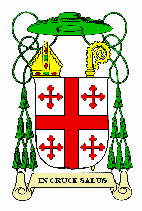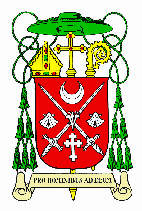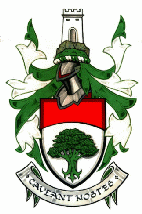Flannery Clan
Clann Fhlannabhra
Heraldry
skip to the coats of arms ...
(click to enlarge)
 |
 |
 |
 |
| Flannery (Ireland, 1858) | Flannery (England, 1904) | Flannelly (U.S.A., 1948) | O'Flannery (Ireland, 1991) |
Although the development of heraldry is rightly attributed to the Normans - strongly influenced by their Scandinavian heritage - there is considerable evidence that a rudimentary form of heraldry existed in Ireland before the arrival of the Normans, possibly due in part to the cultural contribution from earlier Viking settlers. It is certain that the early Irish held certain symbols sacred as a result of pre-Christian religions and ancient mythology. These totems gradually became associated with specific regions, and formed the basis of tribal emblems with deeply personal significance to tribal members.
In the context of practical heraldry, which is essentially the means of readily identifying similarly armoured combatants, it should be borne in mind that the majority of medieval Irish soldiers fought with little or no formal armour. The Irish kern (lightly armed infantryman) typically wore a linen tunic, carried a targe (small round shield) strapped to the defensive elbow and fought with a short stabbing lance or sword. Chain mail was initially only worn by foreign mercenaries known as Gallowglasses (usually Scottish) who wore a steel plate helmet - normally an open cap rather than a fully enclosed bassinet - and wielded the cliamh mór. This huge two-handed sword tended to preclude the use of a shield. As a consequence of the medieval Irish predisposition to eschew formal armour, it was common for the heraldic emblems to be displayed on banners at rallying points. However, the conventional form of display on shields is not considered to be a cultural compromise.
Strictly speaking, coats of arms are granted to individuals and their direct descendants. They are not awarded to unrelated groups of people sharing similar surnames. However, it is becoming increasingly popular for people to display so-called family arms in a variety of domestic situations (heraldic displays in their homes, on their stationery, websites etc.) and there is no real harm in this practice as long as the lawful grantee is tacitly acknowledged. Indeed, some armigerous individuals would not be averse to sharing the use of their arms with unrelated individuals, since it promotes an aspect of family history which is an important part of our heritage.
A full patent of arms normally comprises the following elements :-
Arms - the heraldic signs and emblems depicted on a shield or escutcheon; Helmet - the social standing of the grantee dictates the type of helmet displayed above the shield; Mantling - the symbolic shredded cape of designated colours framing the shield; Wreath - the annular cloth seating of the same designated colours as the mantling, positioned on top of the helmet; Crest - the heraldic device depicted on top of the wreath; and Motto - an adopted slogan displayed below the shield. Supporters are heraldic figures displayed on either side of the shield, but are only granted in rare instances (hereditary peerage, etc.).
Arms assigned to members of the clergy are somewhat different. The helmet, crest and mantling are replaced by a pontifical hat (flat and wide brimmed) with decorative tassels. The colour of the hat and the number of tassles denote the seniority of the clergyman. In addition, the arms of senior clergymen were formerly ornamented by a mitre on top of the shield, and a processional cross and/or crozier behind the shield, but this practice was restricted by the instruction of Pope Paul VI on 13th April 1969, and only the processional cross is shown on modern devices.
We are fortunate that there are four different patents of arms assigned to bearers of the name: two ecclesiastical devices and two secular devices. These are detailed as follows.
Flannery (Ireland, 1858)
Argent, a cross between four crosses bottony gules. (white background, red cross, and four red crosses with each arm terminating in a trefoil)
Conventionally, the pontifical hat for a bishop is a green gallero with twelve green tassels (six on either side arranged in three rows).
A jewelled mitre and a gold crozier are placed behind the shield, left and right respectively.
IN CRUCE SALUS. (Salvation in the Cross)
Flannery (England, 1904)
On 22nd December 1904, the following armorial bearings (Grant #75/20) were registered to Sir James Fortescue Flannery, Bt. (1851 - 1943) in the College of Arms in London :-
Argent, on a mount in base vert, an oak-tree proper, on a chief enarched gules, two roses of the first. (white background, naturally coloured oak-tree on a green mound, two white roses on a red upwardly-arched upper band)
Note that the arms of a baronet are always charged with a badge to indicate his rank, although this is not always explicitly mentioned in the patent (and was not shown on the original artwork). The badge comprises either an escutcheon argent (white mini-shield) or canton argent (small white square), charged with a hand sinister couped at the wrist gules (red left hand). It is frequently called the badge of Ulster, but the Ulster hand is more correctly dexter (right) not sinister (left). The badge is normally located at the top edge of the chief, and positioned either centrally or at the dexter (bearer's right) edge in order to suit the arrangement of the emblems on the field. In this case, an escutcheon should be centrally placed between the roses. This has been confirmed by Mr. Henry Paston-Bedingfeld, York Herald, and Mr. Fergus Gillespie, Chief Herald.
Conventionally, the helmet for a baronet is made of steel trimmed with gold, and displayed face forwards with the visor open.
Gules and argent. (red and white)
On a wreath of the colours, in front of an oak-tree a cat passant guardant, both proper. (on a red and white wreath, a naturally coloured cat walking with face front, in front of a naturally coloured oak-tree) The original artwork incorrectly shows the cat standing, not walking; but this is a minor error.
FIRMITATE COELI FLOREAT ARBOR. (May the tree flourish in Heaven)
Flannelly (U.S.A., 1948)
Gules, two swords in saltire argent, charged with a lily of the second between two escallops ermine in fess, in chief a crescent of the second, in base a Latin cross crosslet of the second. (red background, two white diagonally crossed swords behind a central white lily flanked on both sides by a fur-coloured sea shell, a white crescent above, a long white cross below with each arm crossed)
Note that the white swords on red background are a clever representation of Red Valour, the common literal translation of the surname Ó Flannghaile / Flannelly. The charges (lily, scallops, cross and crescent) were selected for their personal significance to the life and achievements of the clergyman, and their arrangement represents a cross. The lily may elude to both Our Lady and Saint Joseph; the scallops were usually associated with pilgrims going to the Holy Land; the crescent normally denotes a second son (especially when the crescent is positioned in the centre chief point).
Conventionally, the pontifical hat for a bishop is a green gallero with twelve green tassels (six on either side arranged in three rows).
A gold processional cross is centred behind the shield, flanked by a jewelled mitre and a gold crozier.
PRO HOMINIBUS AD DEUM. (Leading the people to God)
O'Flannery (Ireland, 1991)
Argent, an oak-tree eradicated vert, a chief enarched gules. (white background, a green oak-tree with roots, a red upwardly-arched upper band)
Conventionally, the helmet for a gentleman is made of steel, and displayed in profile with the visor closed.
Vert doubled argent. (green and white)
On a mount vert, a Moorish square tower argent founded on rock or. (a white Moorish square tower built on yellow rock on a green mound)
CAVEANT HOSTES. (Let enemies beware)
The 1904 and 1991 patents of arms may be termed canting arms which means that they contain a pun on the surname. In both cases, the red enarched chief symbolises a Red Eyebrow, the common literal translation of the surname Ó Flannabhra / Flannery. In heraldry, a white background symbolises purity whilst red represents strength and energy. The oak-tree was deeply honoured in pre-Christian religions and Celtic mythology, and is a favourite device of the older Irish families, denoting strength, antiquity and fertility. The crests have primarily personal significance. It is important to remember that the Heraldic Offices are acutely aware of the inherent symbolism in heraldry, and do not grant armorial devices unless they are considered to be appropriate in each specific instance.
There has been a relatively recent move to establish sept arms which would entitle individuals descended from families in discrete regions to display the arms granted to that particular sept. This is a departure from the traditional system - and no doubt upsets some of the entrenched purists - but has reportedly received favourable consideration from past Irish Chief Heralds such as Dr. Edward MacLysaght.
An appropriate device for Flannerys might be a hybrid of the existing secular patents of arms as follows : Argent, on a mount in base vert, an oak-tree proper, a chief enarched gules (white background, naturally coloured oak-tree on a green mound, a red upwardly-arched upper band).
In the same vein, an appropriate device for Flannellys might be a simplified version of the ecclesiastical device as follows : Gules, two swords in saltire argent (red background, two white diagonally crossed swords).
The formal coats of arms may be viewed (and downloaded) by clicking the following links:-
N.B. The illustration of the 1858 device is a tinctured achievement based on stationery filed in the Diocesan Archives (with special thanks to archivist Mr. Joesph Summerville). The illustration of the 1904 grant is a scan from the original patent in Surrey (by kind permission of Mr. David F. M. Lindsay, grandson of Sir James Fortescue Flannery). The illustration of the 1948 device is a tinctured scan of a signed print received from the Archdiocesan Archives (with special thanks to archivist Sr. Marguerita Smith O.P.). The illustration of the 1991 grant is a scan from the original patent in Dublin.
